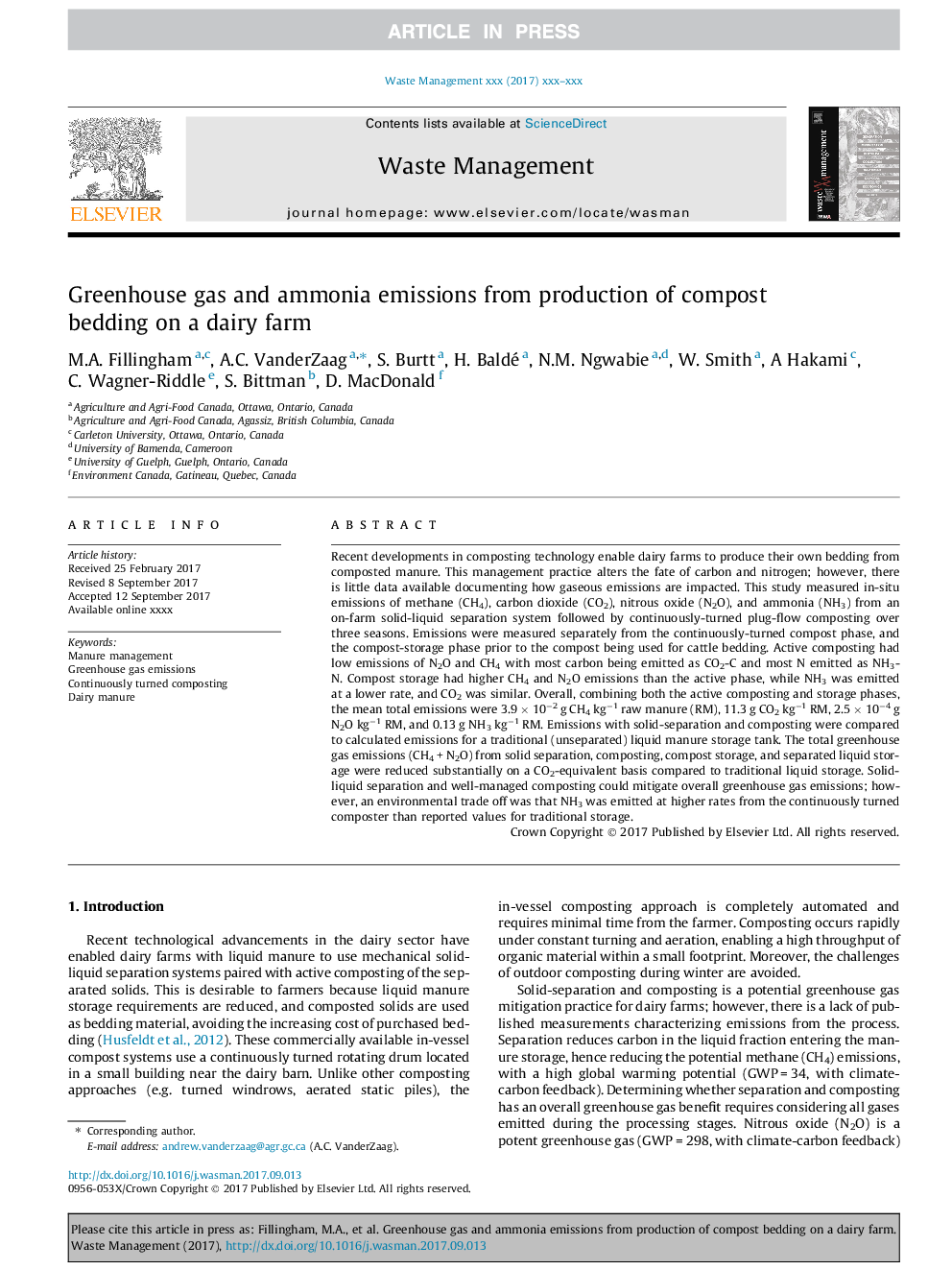| Article ID | Journal | Published Year | Pages | File Type |
|---|---|---|---|---|
| 8870272 | Waste Management | 2017 | 8 Pages |
Abstract
Recent developments in composting technology enable dairy farms to produce their own bedding from composted manure. This management practice alters the fate of carbon and nitrogen; however, there is little data available documenting how gaseous emissions are impacted. This study measured in-situ emissions of methane (CH4), carbon dioxide (CO2), nitrous oxide (N2O), and ammonia (NH3) from an on-farm solid-liquid separation system followed by continuously-turned plug-flow composting over three seasons. Emissions were measured separately from the continuously-turned compost phase, and the compost-storage phase prior to the compost being used for cattle bedding. Active composting had low emissions of N2O and CH4 with most carbon being emitted as CO2-C and most N emitted as NH3-N. Compost storage had higher CH4 and N2O emissions than the active phase, while NH3 was emitted at a lower rate, and CO2 was similar. Overall, combining both the active composting and storage phases, the mean total emissions were 3.9 Ã 10â2 g CH4 kgâ1 raw manure (RM), 11.3 g CO2 kgâ1 RM, 2.5 Ã 10â4 g N2O kgâ1 RM, and 0.13 g NH3 kgâ1 RM. Emissions with solid-separation and composting were compared to calculated emissions for a traditional (unseparated) liquid manure storage tank. The total greenhouse gas emissions (CH4 + N2O) from solid separation, composting, compost storage, and separated liquid storage were reduced substantially on a CO2-equivalent basis compared to traditional liquid storage. Solid-liquid separation and well-managed composting could mitigate overall greenhouse gas emissions; however, an environmental trade off was that NH3 was emitted at higher rates from the continuously turned composter than reported values for traditional storage.
Related Topics
Physical Sciences and Engineering
Earth and Planetary Sciences
Geotechnical Engineering and Engineering Geology
Authors
M.A. Fillingham, A.C. VanderZaag, S. Burtt, H. Baldé, N.M. Ngwabie, W. Smith, A Hakami, C. Wagner-Riddle, S. Bittman, D. MacDonald,
